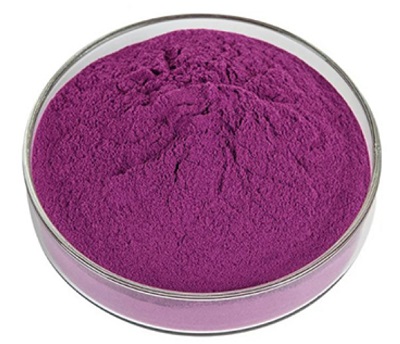バナジウム(III)トリクロリド 化学特性,用途語,生産方法
解説
【Ⅱ】塩化バナジウム(Ⅲ):VCl3(157.30).三塩化バナジウムともいう.VCl4を熱分解(150 ℃)して得られる.紫色の固体.
2VCl4 → 2VCl3 + Cl2
密度3.0 g cm-3.赤熱するとVCl2とVCl4に分解する.水にきわめて易溶,エタノールに可溶,エーテルに不溶.ポリエチレン製造触媒,バナジウム金属や有機バナジウム化合物の製造に用いられる.
応用
塩化バナジウム(Ⅲ),ポリエチレン製造触媒,バナジウム金属や有機バナジウム化合物の製造に用いられる.
化学的特性
Vanadium(III) chloride is pink, deliquescent crystals that decompose upon heating. It is soluble in absolute alcohol and ether but decomposes in water. The hydrated ions of trivalent vanadium are green. They form hydrated coordinated chlorides with excess chloride ions and react with liquid ammonia to produce ammine compounds. They also react with gaseous ammonia to form nitrides, with amines and other organic compounds to produce corresponding coordination compounds, and with certain aromatic hydroxy acids to exhibit characteristic color reactions.

使用
Vanadium(III) chloride has been used as a catalyst for Biginelli condensation. As a reducing agent, it is capable of converting nitrate to nitrite in water samples, allowing for the direct detection of nitrates.
製造方法
Vanadium trioxide powder (2.1 g) and 8.5 ml of pure SOCl2 are placed in a bomb tube about 1.5 cm. in diameter, and the sealed tube is heated for 24 hours at 200℃. The tube is cooled to below 0℃ (in order to lower the SO2 vapor pressure) and is then opened to allow SO2 to escape. Then the tube contents are flushed out, under anhydrous conditions, into a small flask, using some SOCl2 for this purpose (the SOCl2 is then removed by vacuum distillation). The VCl3 residue is washed several times with very pure CS2 to remove traces of S2Cl2, and then thoroughly vacuum-dried at 80℃. Fine crystals of dark-violet VCl3 are obtained in nearly quantitative yield.

一般的な説明
Vanadium(III) chloride is a crystalline solid with variable oxidation states. It is widely used as a catalyst in organic synthesis, polymerization processes, and redox batteries. It acts as a reducing agent.
空気と水の反応
Deliquescent. Generates acid mists when exposed to moist air. Dissolves in water with formation of an acidic solution and generation of acidic fumes.
反応プロフィール
VANADIUM(III) CHLORIDE attacks many organic compounds. Can catalyze organic reactions. Aqueous solutions react as acids to neutralize bases. These neutralizations generate heat, but less than is generated by neutralization of inorganic acids, inorganic oxoacids, and carboxylic acid. Combination of the trichloride with methylmagnesium iodide, or other Grignard type reagents, can be violently explosive under a variety of conditions, Chem. Rev., 1955, 55, 560.
健康ハザード
TOXIC; inhalation, ingestion or contact (skin, eyes) with vapors, dusts or substance may cause severe injury, burns or death. Reaction with water or moist air will release toxic, corrosive or flammable gases. Reaction with water may generate much heat that will increase the concentration of fumes in the air. Fire will produce irritating, corrosive and/or toxic gases. Runoff from fire control or dilution water may be corrosive and/or toxic and cause pollution.
火災危険
Non-combustible, substance itself does not burn but may decompose upon heating to produce corrosive and/or toxic fumes. Vapors may accumulate in confined areas (basement, tanks, hopper/tank cars etc.). Substance will react with water (some violently), releasing corrosive and/or toxic gases and runoff. Contact with metals may evolve flammable hydrogen gas. Containers may explode when heated or if contaminated with water.
安全性プロファイル
Poison by ingestion and
subcutaneous routes. A corrosive irritant to
skin, eyes, and mucous membranes.
Extremely violent reaction with methyl
magnesium iodide and other Grignard
reagents. When heated to decomposition it
emits toxic fumes of VOx and Cl-. See also
VANADIUM COMPOUNDS and
HYDROCHLORIC ACID.
参考文献
W. Klemm, E. Krose, Z. Anorg. Allg. Chem., 253, 218 (1947), DOI: 10.1002/zaac.19472530313.
バナジウム(III)トリクロリド 上流と下流の製品情報
原材料
準備製品